Today's #TipTuesday is a continuation of my series on Fixed Asset transactions in Dynamics GP and what GL accounts get used where. Today is the second-last of the series, where I will walk through a catch-all set of scenarios around what kinds of asset changes impact the GL. Half of the scenarios are here, and the rest I'll cover next week.
The previous posts so far are:
- Additions with & without YTD/LTD amortization
- Depreciation/Amortization
- Retirements in the 1st year of ownership
- Retirements after the 1st year of ownership
- Different retirement types & impact on Gain/Loss Account
- Retirements with proceeds and sale expenses
Setting the stage
For this post, I'm going back to my original "Buildings" assets, from the first couple of posts in the series. At the time of writing this, here is the asset card I will be using for most of the changes and its various values right now.
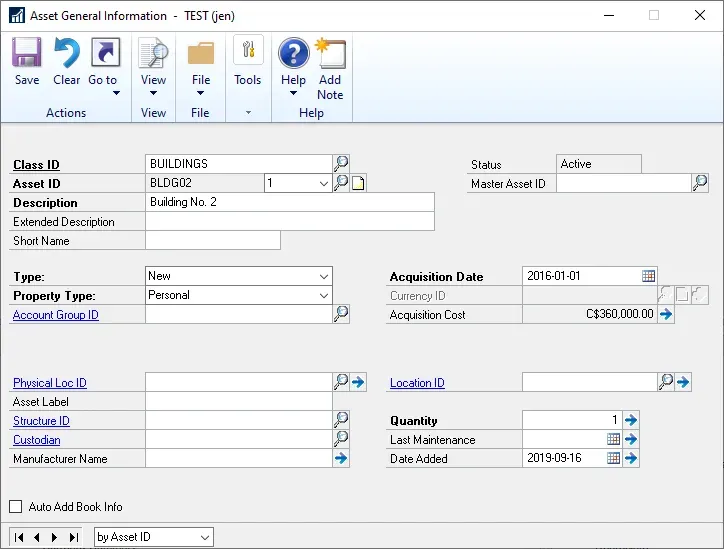

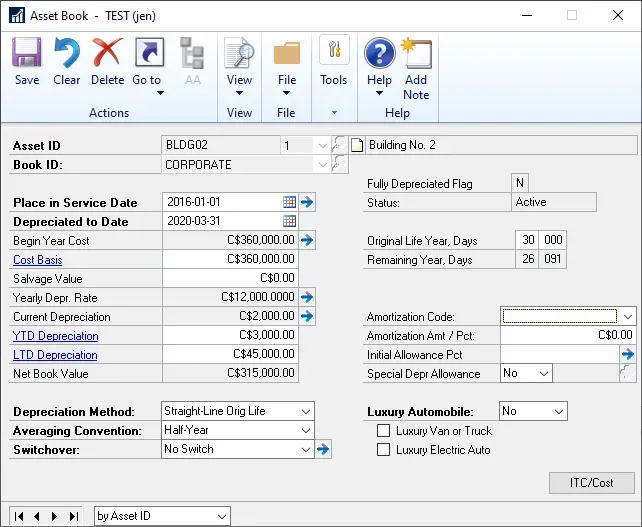
Change #1 - GL Account change on Accounts window
The first change I made was altering some of the GL Accounts on this card's Accounts window. Here's what I changed (made the GL accounts for a fictional "Department 100" for amortization expense, asset cost and accumulated amortization).
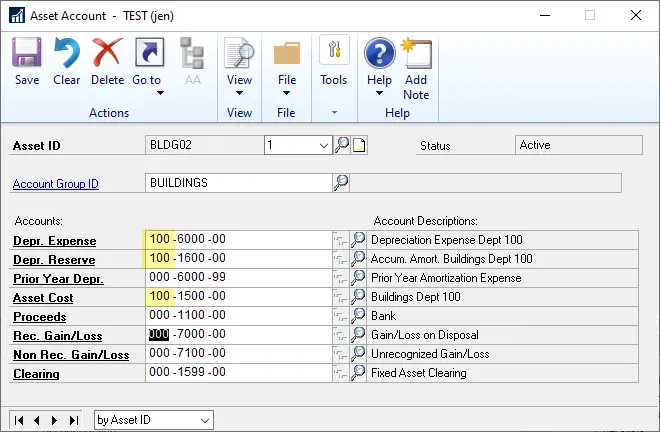
What does this impact? There is no GL posting as a result of an account change. However, any future transactions will start to use these GL Accounts on the subsequent transactions. Example: after changing these, I ran depreciation and here is the GL posting result:
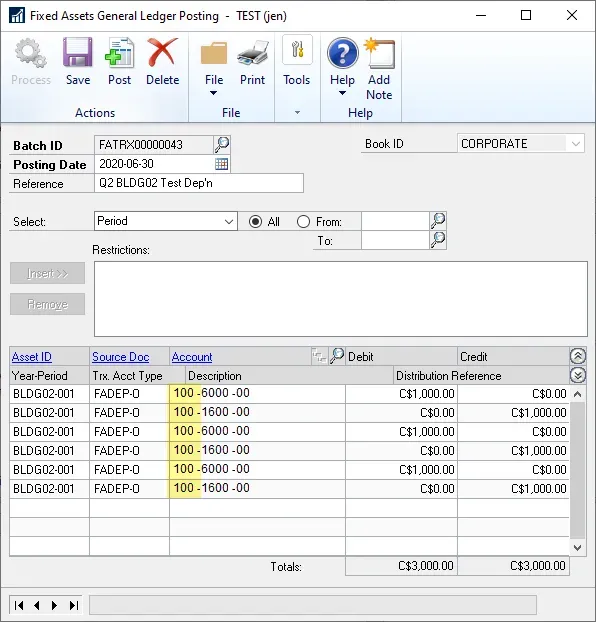
Change #2 - GL Account change on Mass Change window
Similar to the above scenario, there is no GL posting as a result of a Mass Change to GL Accounts.
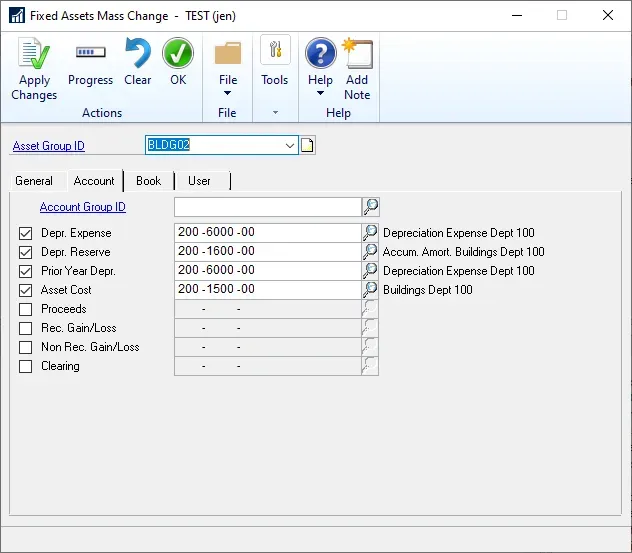
On future transactions, they will use the new GL Accounts though. I didn't post through any depreciation entry but it does the same as Change #1 illustrates.
Change #3 - Mass Change Class ID
Out of curiosity, I decided to also do a Mass Change on the Class ID of this asset. Just for fun, I moved it to the FURNITURE class. The result: No GL impact although, once again, future transactions would use the new settings (in this case, amortization settings based on a new useful life and/or new GL Accounts if an Account Group was on that Class ID as the default).
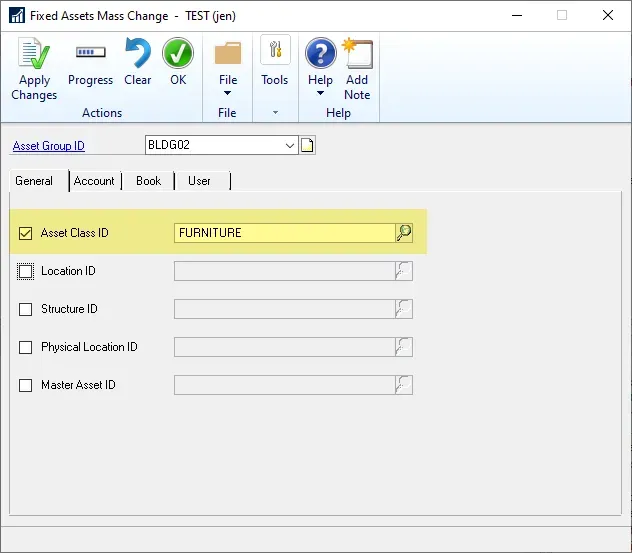
Summary
The 3 changes I discussed in this post today are all things where there is no immediate GL impact. All of them could impact future transactions and which GL Accounts are used, as they are changing the configuration for subsequent transactions.
When undergoing a re-class type of project where assets need to be moved and costs from one place to another including the GL values, consider using Transfers, which I'll cover in my wrap-up post next week.

